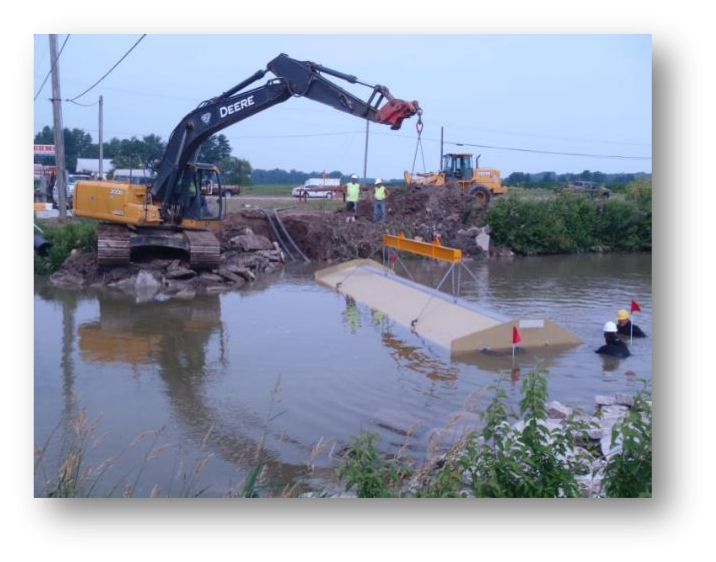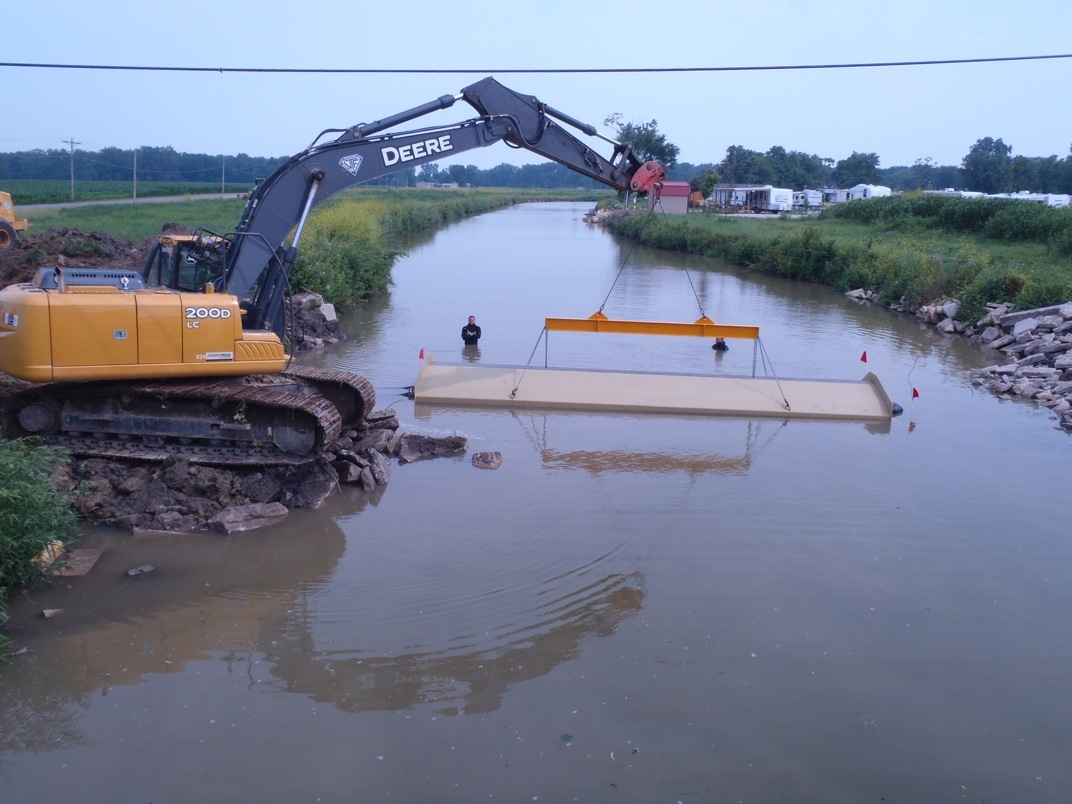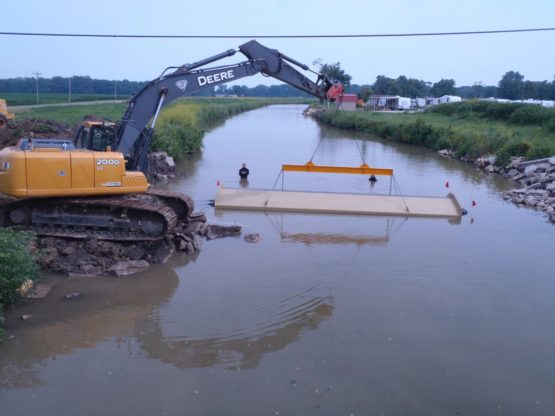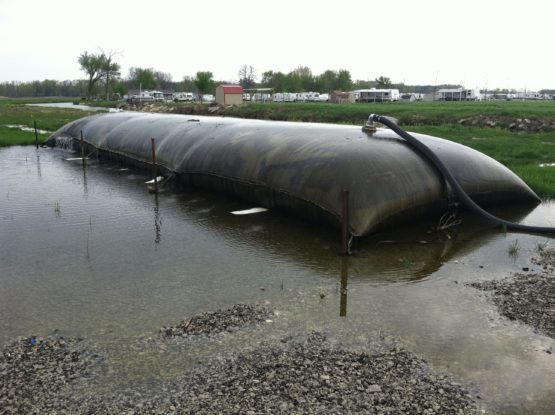Chickasaw Creek – Bedload Interception – Lake Management
Streamside in collaboration and grant funding from the Ohio EPA, Ohio DNR, City of Celina, Mercer County and other instrumental watershed organizations was able to manufacture and install a 30-foot Bedload Sediment Collector (Interceptor) on Chickasaw Creek in St Marys, OH. Chickasaw Creek is a tributary that feeds into (GLSM) Grand Lake St Marys (a 13,000 plus acre man-made shallow lake) that is instrumental in recreation and commerce for the local community. The Bedload Sediment Collector was part of a “Treatment Train” solution project to addressing the nutrient-rich sediment (Phosphorous and Nitrate) that was feeding into the bays of Grand Lake St Marys, which was a source of feeding the “Blue Green Algae” outbreak that grossly affected GLSM.
The 30-wide Bedload Sediment Collector selectively collects sediment migrating at the bottom of the river as bedload once it falls through its sized grates and into its hopper. The Sediment Collector is directly connected to a submersible pump in a dry or wet well along the shore where it pumps the sediment slurry collected in the Sediment Collector (Interceptor) to a geo-textile filter bag in this application on shore. The the filter bag contains the fine sediments collected from the Bedload sediment collector (and in this application the high nutrient-laden sediment), and through an upland french drain system installed, the water is returned back to the creek.
The 30-foot Bedload Sediment Collectors were installed at three different contributing tributaries with heavy loading and high-nutrient content. The goal of the project was to collect the nutrient-rich sediment and discharge into geo-textile filter bags to retain the finer sediments and allow the water to naturally percolate back into the creek via a “french drain” system. All three locations had initial success and allowed for remote operation of the Collector Systems. The total operation time varied between all of the systems between 2-4 years continuous with heavy collection of sediment at the beginning of the project and reductions as operations continued until it was determined by Streamside, the watershed, and ODNR that the tributaries were not continuing to seeing any excess loading of sediment. The collector systems were pulled from the river in 2015 and used on other project for additional field testing in various applications, as well as used for continued operations of commercial sand mining for beneficial reuse.
Streamside in collaboration and grant funding from the Ohio EPA, Ohio DNR, City of Celina, Mercer County and other instrumental watershed organizations was able to manufacture and install a 30-foot Bedload Sediment Collector (Interceptor) on Chickasaw Creek in St Marys, OH. Chickasaw Creek is a tributary that feeds into (GLSM) Grand Lake St Marys (a 13,000 plus acre man-made shallow lake) that is instrumental in recreation and commerce for the local community. The Bedload Sediment Collector was part of a “Treatment Train” solution project to addressing the nutrient-rich sediment (Phosphorous and Nitrate) that was feeding into the bays of Grand Lake St Marys, which was a source of feeding the “Blue Green Algae” outbreak that grossly affected GLSM.
The 30-wide Bedload Sediment Collector selectively collects sediment migrating at the bottom of the river as bedload once it falls through its sized grates and into its hopper. The Sediment Collector is directly connected to a submersible pump in a dry or wet well along the shore where it pumps the sediment slurry collected in the Sediment Collector (Interceptor) to a geo-textile filter bag in this application on shore. The the filter bag contains the fine sediments collected from the Bedload sediment collector (and in this application the high nutrient-laden sediment), and through an upland french drain system installed, the water is returned back to the creek.
The 30-foot Bedload Sediment Collectors were installed at three different contributing tributaries with heavy loading and high-nutrient content. The goal of the project was to collect the nutrient-rich sediment and discharge into geo-textile filter bags to retain the finer sediments and allow the water to naturally percolate back into the creek via a “french drain” system. All three locations had initial success and allowed for remote operation of the Collector Systems. The total operation time varied between all of the systems between 2-4 years continuous with heavy collection of sediment at the beginning of the project and reductions as operations continued until it was determined by Streamside, the watershed, and ODNR that the tributaries were not continuing to seeing any excess loading of sediment. The collector systems were pulled from the river in 2015 and used on other project for additional field testing in various applications, as well as used for continued operations of commercial sand mining for beneficial reuse.




